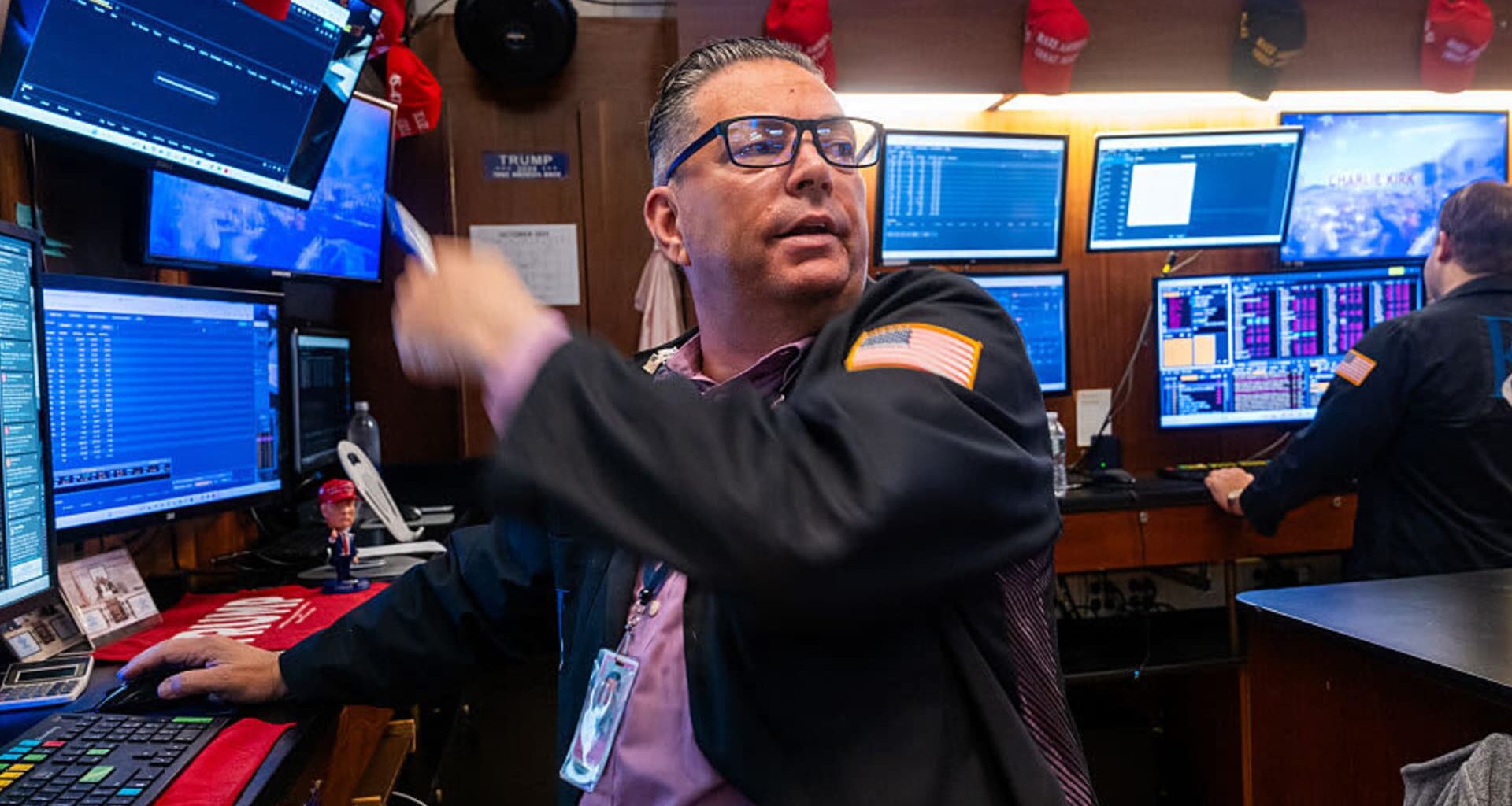Traders work on the floor of the New York Stock Exchange (NYSE) on Oct. 13, 2025, in New York City.
Spencer Platt | Getty Images
The Dow Jones Industrial Average rallied to a fresh closing record Tuesday, while the Nasdaq Composite struggled as investors moved money away from technology stocks into other parts of the market that traded at lower valuations.
The 30-stock Dow rose 559.33 points, or 1.18%, to close at 47,927.96, with those on Wall Street buying up shares of various blue-chip names, including health care giants Merck, Amgen and Johnson & Johnson. The S&P 500 also rose 0.21% to finish at 6,846.61. However, the tech-heavy Nasdaq lost 0.25% to settle at 23,468.30.
Artificial intelligence cloud infrastructure provider CoreWeave was among the laggards of the session. Shares slid more than 16% after the company’s guidance disappointed investors, hurting the AI trade. Along with that, shares of AI chip darling Nvidia pulled back about 3% after SoftBank sold its entire stake in the chipmaker for more than $5 billion.
“These tech companies, they’re cash flow machines,” Bill Fitzpatrick, portfolio manager at Logan Capital Management, said in an interview with CNBC. “They’re terrific companies, but the starting point does matter, and given where they’re valued today, it doesn’t take much – a little bit of negative news – for the sentiment to turn just a little bit and you get an unwind that is more favorable to value equities.”
The AI trade has been under pressure this month amid growing valuation concerns, a development that has put the Nasdaq’s month-to-date losses at around 1%. On Tuesday, notable names in the play, such as Micron Technology, Oracle, and Palantir Technologies, moved lower in sympathy with CoreWeave and Nvidia. Micron declined nearly 5%, while Oracle and Palantir pulled back about 2% and more than 1%, respectively. The Technology Select Sector SPDR fund (XLK), which tracks the S&P 500 tech sector, was down roughly 1%.
“The [S&P 500] is trading well above 20 times. That’s going to be biased upwards by the [‘Magnificent Seven’] and the other technology companies,” he added, noting that there have been some names that have been “left behind” in the bull market. “There’s so much going into expected capital expenditures over the next couple of years that if there is a pullback at all on that front … it would send a message that perhaps things have gotten a little bit ahead of themselves.”
Adding to the downbeat sentiment seen in the Nasdaq Tuesday, a new report from ADP revealed that for the four weeks ended Oct. 25, private sector job creation was down more than 11,000 on average per week. The data stands in contrast to the October gains that the firm reported last week and signals some weakness in the labor market.
Tuesday’s moves come a day after the major U.S. indexes rallied across the board on hopes that the record-setting U.S. government shutdown could be nearing an end. The Senate on Monday evening passed a bill to end the stoppage, sending it to the House. The negotiated deal does not include Democrats’ demand that any funding bill must include an extension of Affordable Care Act subsidies and instead calls for a vote on the tax credits in December.
“I do think there’s a price to pay for the political dysfunction, not only in the U.S. but around the globe,” Fitzpatrick said. “Yes, we’re going to get a resolution, but the polarization is still very much prevalent, and that is one of many factors that I think should push investors toward a higher quality trade.”
